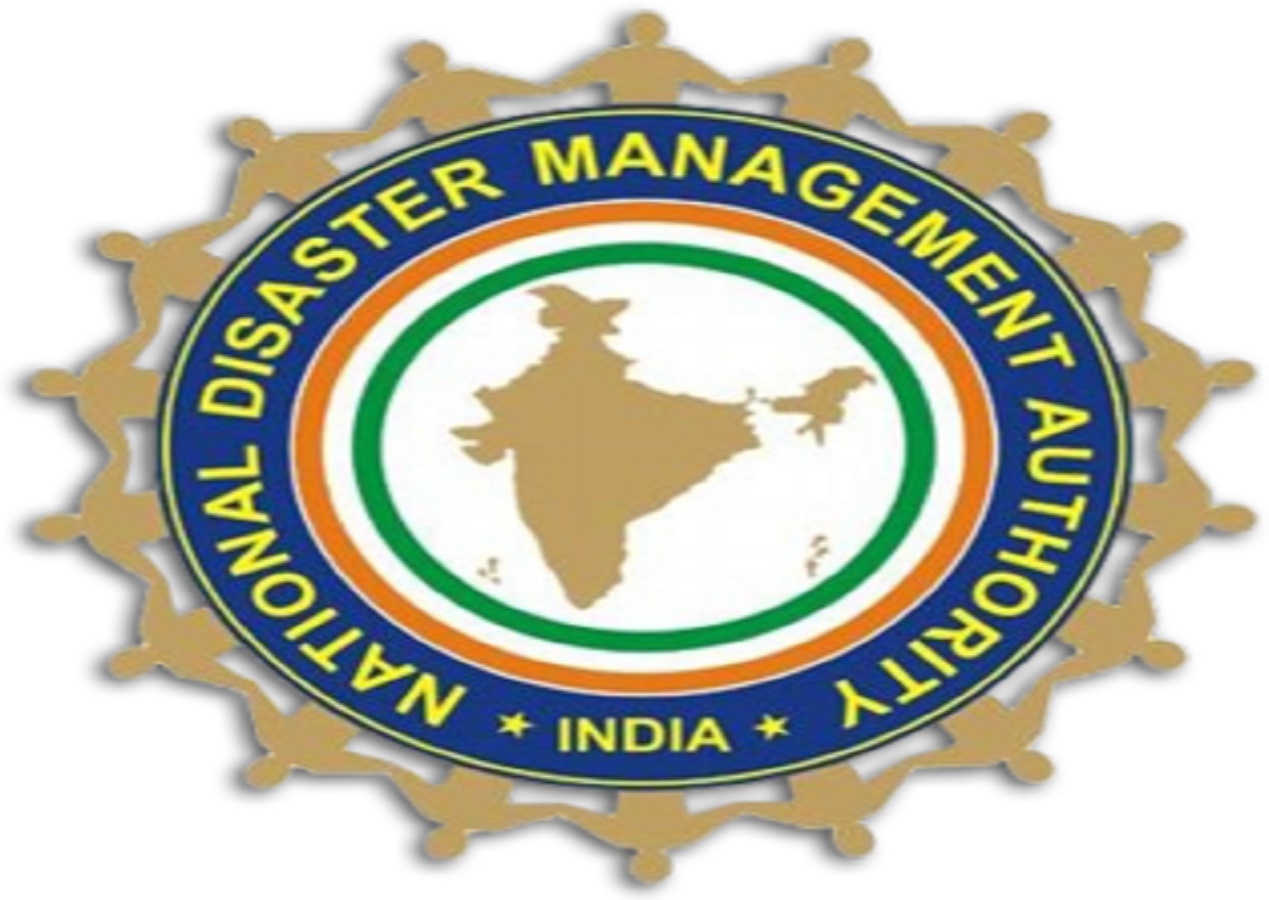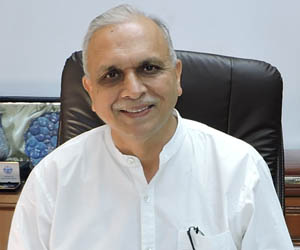India is facing a health emergency of unprecedented proportions. The Covid-19 pandemic has already claimed over 250,000 lives and infected over 24 million people in India. It is now rapidly spreading to rural areas where health infrastructure is meagre. Even metro cities, including the Capital, have faced severe shortages of hospital beds, oxygen and other medical supplies. Similar is the plight of most of the class A and B cities.
As the pandemic plays out, the deficiencies of our disaster management systems which we had built over the last fifteen years have been exposed.
Following the Odisha super –cyclone in 1998, serious thinking had begun in the time of Shri Vajpayee to develop a national mechanism to deal with disasters holistically. The PM himself became the Chairman and Shri Sharad Pawar was appointed as Vice Chairman of this multi-party study group. Subsequently Bhuj and Latur earthquakes and the Indian Ocean Tsunami further strengthened the resolve of the then government to holistically deal with the natural and man-made disasters. This group visited a number of countries to learn from their structural arrangements and best practices. After a lot of discussion and cogitation, the Parliament unanimously enacted the Disaster Management Act 20051. This was a landmark achievement.
The National Disaster Management Authority (NDMA) the apex body, was to be headed by the Prime Minister. It could have upto nine members and one of them was to serve as the Vice Chairman. The organisation was given a high stature, with Vice Chairman in the status of a Cabinet Minister and other members as Minisrters of State to facilitate their easy working with the union ministeries and the states. The organization being directly placed under the PM, facilitated its working smoothly with all the ministeries and states. The NDMA in its initial years did a creditable job of issuing guidelines, prepared by experts, technocrats, NGOs, bureaucrats for handling different kinds of disasters including floods, cyclones, earthquakes, and man made disasters like chemical, biological, radiological and nuclear (CBRN) disasters. It also had special provision for dealing with medical emergencies. These 20 guidelines have been accepted as invaluable worldwide.
The NDMA is serviced by the Ministry of Home Affairs which has considerable resources at its command.
The NDMA Act 2005 provides a wide role to the NDMA. Under the NDMA Act 2005, the Government created a National Disaster Management Authority (NDMA), headed by the Prime Minister. States Disaster Management Authorities (SDMA) were to be headed by the Chief Ministers and District Diaster Management Authorities (DDMAs) were to be headed by Distict Collectors/ Magistrates/ Deputy Commissioners as the case may be, to spearhead and adopt a holistic and integrated approach to DM. What was most important was that there was to be a paradigm shift, from the erstwhile relief centric response to a proactive prevention, mitigation and preparedness driven approach for conserving developmental gains and minimizing loss of life, livelihood and property.
The NDMA was responsible for "laying down the policies, plans and guidelines for disaster management" and to ensure "timely and effective response to disaster". The guidelines laid down by the were to be “followed by the State Authorities for drawing up the State Plans".
Section 6 gives a wide remit to the NDMA. It can initiate steps for prevention of disasters, its mitigation, and ensure preparedness and capacity building to deal with the disasters. Clearly, in the current pandemic, the NDMA would have a lead/major role to play, if it had retained its original structure and stature. It did a creditable job during the H1N1 flu and worked seamlessly with the Ministry of Health.
Section 8 of the Act provides for the Central Government to constitute a National Executive Committee (NEC) to assist the National Authority. The NEC is composed of Secretary level officers from relevant departments. Theoretically speaking, the Covid-19 task forces could be coordinated by the NDMA. Similarly, there was a Crisis Management Committee (CMC) headed by the Cabinet Secretary. With the NDMA, CMC, NEC and concerned ministries working together, all gaps would have been covered. They would also have taken extensive support of technocrats, medicos, academics, NGOs etc. This would have facilitated the the whole of the government approach.
An extensive mechanism to deal with disasters has already been created. State Disaster Management Authorities (SDMAs) headed by Chief Ministers were created. They were mandated to ensure that all the departments of the States, prepare disaster management plans as prescribed by the National and State Authorities.
Similarly, District Disaster Management Authorities (DDMA) under the District Magistrates were created. The elected representative of the areas are members and Ex-Officio co-chairmen of the DDMAs. This provides a very good interface between the govt. and the public.
In addition, a National Disaster Resonse Force (NDRF) was formed, presently having a strength of about 14,000. This force is equipped with state of the art equipment and is rated as amongst the best in the world. The NDRF, year after year, has played an outstanding role in providing quick and timely relief to the disaster affected people.
Thus there was supposed to be already an elaborate and fully dedicated structure of disaster management in place. This has now been reduced quantitavely and qualitatively. The question that arises is as to what role is the NDMA playing in the current pandemic disaster?
While the government has set up several ad hoc task forces, the NDMA is invisible. The meetings of the NDMA, the SDMAs have not been called. Many States authorities have not met for considerable time. Government rightly invoked the NDMA Act to get a lot of powers that are needed to deal with the pandemic. Beyond that one does not know as to what advice has the NDMA given to the government in dealing with the pandemic. There is no public information on whether the NDMA has been incorporated into the government’s response.
The NDMA Act provides for the appointment of a Vice Chairman of NDMA. At present, the NDMA does not have a Vice-Chairman. The NDMA can have up to nine members. Presently there are only five. There is a need to run the NDMA to its full complement, so that disasters management regains the capability and moral authority to deal wth these issues of man-made disasters equally well, as they are doing in the case of natural disasters.
According to an analysis of the MHA’s budget, the budget for disaster management infrastructure was Rs 72 crores in RE of 2020-21, as compared to the Budget Estimates of Rs 147 cr in 2019-20. This was a drop of 51 per cent.2
There is a role and place for the NDMA at the present juncture. Integration of the NDMA in government planning and response will be most appropriate. As the NDMA gets active, the State Disaster Management Authorities and District Management Authorities will also get in motion. They have considerable knowledge and reach to the remote corners of the country.
As the virus has already spread to rural areas, relief will need to be reached to the affected people immediately. The NDA/SDMA/District disaster management authorities can play a major role in this. They can help mobilise experts and NGOs for handling the disaster response. That will act as force multiplying factor.
The NDMA can also liaise with the Indian Armed Forces to coordinate the relief effort. The NDMA and associated mechanisms will also get an invaluable hands-on experience of dealing with the pandemic of a lifetime. Activation of the NDMA will be a win-win situation for all.
No time should be lost in recreating the NDMA to its full potential and structures. If the NDMA is revived even now on high priority, it will help the nation prepare suitably for taking on the challenge of the expected third wave in the intermediate period. The government should give this recommendation a serious thought.
Endnotes
- Text of the DMA 2005 is avialable at https://cdn.s3waas.gov.in/s365658fde58ab3c2b6e5132a39fae7cb9/uploads/2018/04/2018041720.pdf, accessed on 16.52021.
- https://prsindia.org/budgets/parliament/demand-for-grants-2020-21-analysis-home-affairs
(The paper is the author’s individual scholastic articulation. The author certifies that the article/paper is original in content, unpublished and it has not been submitted for publication/web upload elsewhere, and that the facts and figures quoted are duly referenced, as needed, and are believed to be correct). (The paper does not necessarily represent the organisational stance... More >>
Image Source: https://upload.wikimedia.org/wikipedia/en/6/6b/National_Disaster_Management_Authority_Logo.png











Post new comment